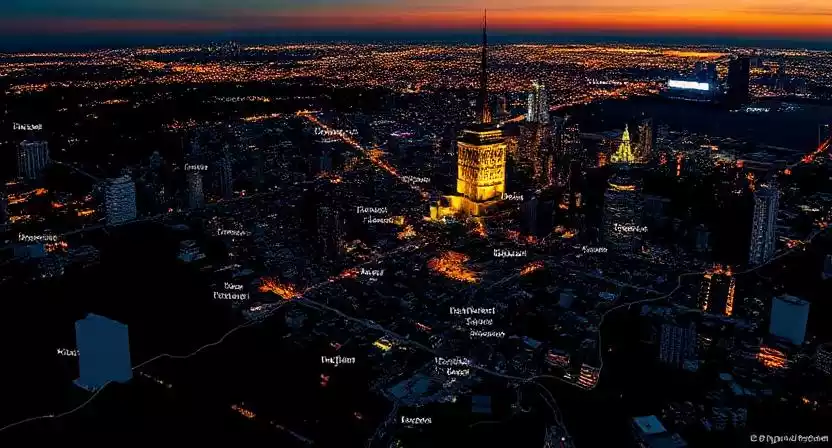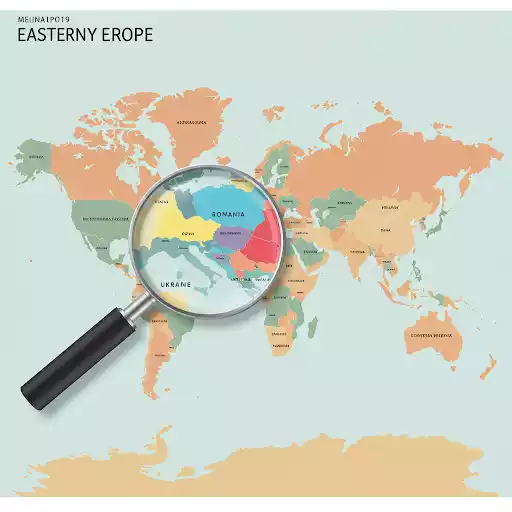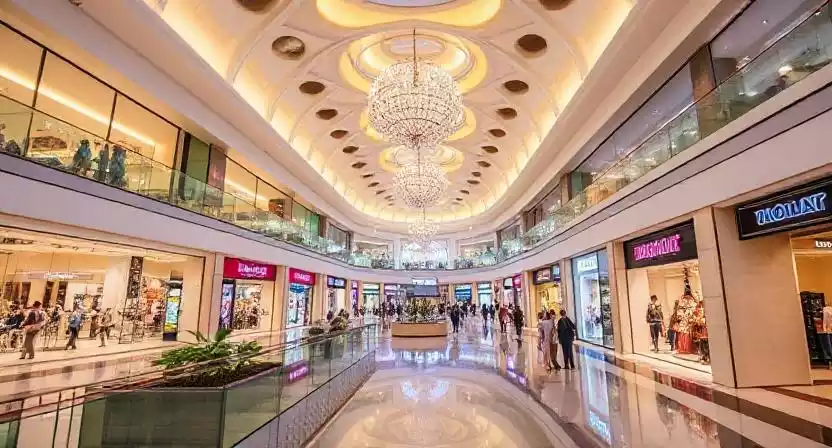The Unstoppable Growth of Megacities: Exploring the World’s Ten Largest Urban Centers
The world is increasingly urbanizing. More and more people are moving to cities in search of opportunities, better living standards, and a vibrant social life. This mass migration has led to the rise of megacities – sprawling urban agglomerations with populations exceeding ten million inhabitants. These massive urban centers are not just large; they are complex ecosystems that shape national economies, drive innovation, and face unique challenges. Let us delve into the ten largest cities on our planet, exploring their unique characteristics and the forces driving their growth.
Table of Contents
1. Tokyo, Japan: A Metropolis of Order and Innovation
Leading the pack is Tokyo, the vibrant capital of Japan. Tokyo boasts an estimated metropolitan area population of over 37 million people in 2025. This makes it the most populous urban agglomeration in the world. Tokyo seamlessly blends ultra-modern skyscrapers with historic temples and serene gardens. The city is renowned for its efficient public transportation, its cleanliness, and its cutting-edge technology. Moreover, Tokyo stands as a global hub for finance, commerce, and culture, constantly pushing the boundaries of innovation. However, this immense population also presents challenges in terms of housing, traffic management, and disaster preparedness.
2. Delhi, India: A Historical City Bursting with Growth
Next on our list is Delhi, the sprawling capital of India. Delhi’s metropolitan area is projected to have a population of over 34.6 million in 2025. This makes it the second-largest urban area globally. Delhi is a city steeped in history, with layers of empires and cultures woven into its urban fabric. Alongside ancient monuments and bustling old quarters, one finds modern skyscrapers and burgeoning commercial centers. The city’s rapid population growth reflects India’s overall demographic trends and the continuous influx of people seeking economic opportunities. Consequently, Delhi grapples with significant challenges related to infrastructure, pollution, and social inequality.
3. Shanghai, China: A Global Economic Powerhouse
Moving east, we encounter Shanghai, China’s largest city and a global financial hub. Shanghai’s metropolitan area is estimated to house over 30.4 million residents in 2025. This makes it a crucial center for trade, finance, and manufacturing. The city’s skyline is a testament to its rapid economic development, featuring iconic structures like the Shanghai Tower and the Oriental Pearl TV Tower. Shanghai’s strategic location at the mouth of the Yangtze River has facilitated its growth into a major port and a gateway to China’s vast interior. Nevertheless, this rapid expansion has also brought about challenges such as environmental pollution and the need for sustainable urban planning.
4. Dhaka, Bangladesh: A City of Resilience and Opportunity
Our journey takes us to Dhaka, the capital of Bangladesh. Dhaka is a densely populated megacity with an estimated metropolitan area population exceeding 23 million. Despite facing numerous challenges, including poverty and frequent natural disasters, Dhaka continues to attract people from rural areas seeking better prospects. The city is a vibrant center of culture and commerce, with a bustling energy that reflects the dynamism of its people. However, Dhaka urgently needs improvements in infrastructure, sanitation, and housing to accommodate its growing population sustainably.
5. Mumbai, India: The Entertainment and Financial Capital
Returning to India, we arrive in Mumbai, the capital of Maharashtra and the nation’s financial and entertainment hub. Mumbai’s metropolitan area is projected to have a population of over 22 million in 2025. This makes it a significant economic engine for India, hosting the headquarters of major corporations and the Bollywood film industry. Mumbai’s unique geography, a peninsula jutting into the Arabian Sea, has shaped its urban development. The city faces immense pressure on its infrastructure and resources due to its high population density and continuous migration.
6. Cairo, Egypt: A Historical Metropolis on the Nile
Venturing into Africa, we find Cairo, the historic capital of Egypt. Cairo’s metropolitan area is home to an estimated population of over 21 million people. Situated along the Nile River, Cairo boasts a rich history, with ancient wonders like the Giza pyramids located just outside the city. Cairo is the cultural, political, and economic heart of Egypt, attracting people from across the country and beyond. However, the city struggles with issues such as traffic congestion, air pollution, and the need to preserve its historical heritage amidst rapid urbanization.
7. Beijing, China: The Political and Cultural Heart of China
Our exploration leads us to Beijing, the capital of China and a city of immense historical and cultural significance. Beijing’s metropolitan area is estimated to have a population of over 22.5 million in 2025. As the political center of China, Beijing is home to the government and numerous national institutions. It also boasts a wealth of historical sites, including the Forbidden City and the Temple of Heaven. While embracing modernity, Beijing actively works to preserve its cultural heritage. Nevertheless, the city faces challenges related to air quality and managing its large and growing population.
8. Lagos, Nigeria: A West African Megacity on the Rise
Traveling to West Africa, we encounter Lagos, the largest city in Nigeria. Lagos has an estimated metropolitan area population exceeding 21 million. This makes it a major commercial and transportation hub for the region. Lagos is a dynamic and rapidly growing city, fueled by its economic opportunities and its role as a cultural melting pot. However, the city grapples with significant infrastructural deficits, including inadequate housing, transportation, and sanitation, which need urgent attention to ensure sustainable development.
9. Kolkata, India: A City of Culture and Tradition
Returning to India once more, we arrive in Kolkata, the capital of West Bengal. Kolkata’s metropolitan area is projected to have a population of over 15.8 million in 2025. This city holds a special place in India’s history as a former capital during British rule and a center of intellectual and artistic ferment. Kolkata retains a unique charm with its colonial-era architecture and its vibrant cultural scene. However, like other major Indian cities, Kolkata faces challenges related to poverty, infrastructure, and environmental sustainability.
10. Guangzhou, China: A Major Trade and Manufacturing Center
Concluding our list is Guangzhou, a major port and manufacturing hub in southern China. Guangzhou’s metropolitan area is estimated to have a population of nearly 14.8 million in 2025. Its strategic location near Hong Kong and the Pearl River Delta has propelled its growth as a key center for international trade and manufacturing. Guangzhou boasts a modern infrastructure and a dynamic economy. However, it also faces the need for sustainable industrial development and managing the environmental impact of its rapid growth.
The Forces Driving Megacity Growth
Several factors contribute to the relentless growth of these megacities. Economic opportunities, including better job prospects and higher wages, act as a major draw for people from rural areas and smaller towns. Furthermore, cities often offer better access to education, healthcare, and other essential services. The concentration of people also fosters innovation, cultural exchange, and a more vibrant social life. Consequently, this creates a powerful cycle of migration and urban expansion.
Challenges and the Path Forward
However, the immense size and rapid growth of megacities also present significant challenges. These include strain on infrastructure, such as transportation networks, water supply, and sanitation systems. Moreover, housing shortages and the rise of informal settlements are common issues. Environmental problems, including air and water pollution, pose serious health risks. Social inequality and crime can also be exacerbated in densely populated urban areas.
Addressing these challenges requires comprehensive and sustainable urban planning. This includes investing in efficient public transportation, developing affordable housing, and implementing environmentally friendly policies. Furthermore, fostering inclusive economic growth and ensuring access to basic services for all residents are crucial for creating livable and sustainable megacities in the future.
Conclusion
The ten largest cities in the world are dynamic and complex entities that reflect the ongoing trends of global urbanization. They are centers of economic activity, innovation, and cultural exchange. While offering numerous opportunities, they also face significant challenges related to their size and rapid growth. Understanding the forces that shape these megacities and addressing their challenges is crucial for building a sustainable and equitable urban future for the world’s growing population. The stories of these ten urban giants offer valuable insights into the complexities and opportunities of our increasingly urban planet.



